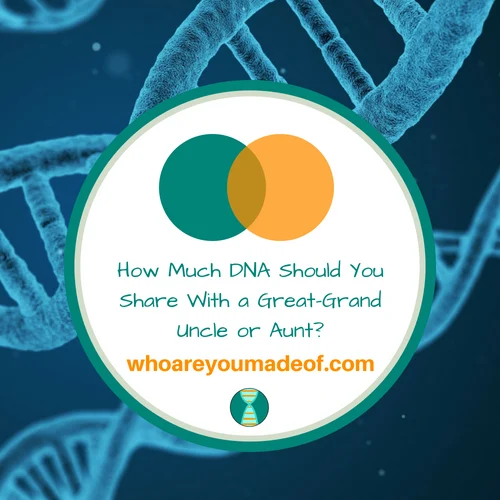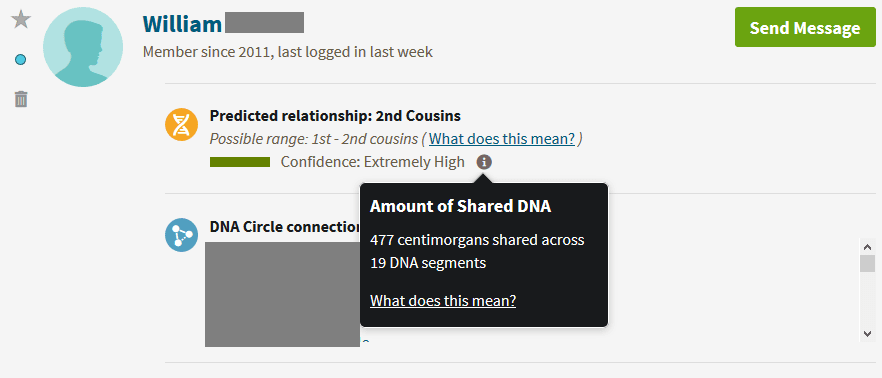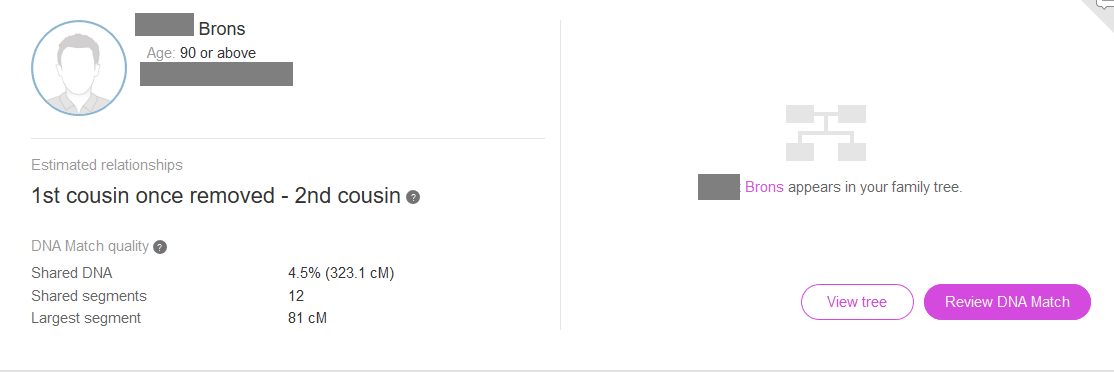Whether you are curious about whether you and your great-great aunt or uncle share the expected amount of DNA, or you are wondering if your mystery DNA match could fit into the great-great uncle category, you have come to the right place.

In this post, we'll discuss how much DNA someone might share with a great-great uncle or aunt, and I'll even show you two examples.
What is a great-great uncle or aunt?
A person who is your great-grand uncle, otherwise known as a great-great uncle, is a sibling of your great-grandparent. The most recent common ancestors that you share with your great-grand aunt or uncle are your great-great grandparents.
This is really amazing, since if you show up as a DNA match with your great-great uncle, then you can view it as evidence that you do descend from that set of great-great grandparents.
A half-great-grand uncle or aunt is a person who is the half-sibling of your great-grandparent. If you have a half-great-grand uncle or aunt, then the most recent common ancestor that you share with that person is one of your great-great grandparents (not both).
If you are interested in reading about how much DNA you should share with a great-uncle, sometimes called a grand-uncle (or aunt!), you might want to read my post titled "How much DNA should you share with a great-uncle". A grand-uncle is different than a great-grand uncle, since they are a sibling of your grandparent, instead of your great-grandparent.
How much DNA should you share with a great-grand uncle?
The expected average amount that a person could share with their great-grand uncle is about 6.25% of their DNA, or 425 cMs.
A person could share as low as 215 cMs (centimorgans) and as high as about 635 cMs with their great-grand uncle.
This general range lines up perfectly with what I have seen in my research, and with what I have experienced in my own family, although it is conceivable that there will be outliers falling slightly above or slightly below the range that I mentioned.
My adult daughter, who has graciously shared her DNA results with me for discussion on this site, has two great-grand uncles (or great-great uncles, whichever you prefer) on her DNA match list on two websites. They are known great-grand uncles to her, and they are related to her through different lines of my family.
Their DNA and genealogical relationship has been verified through connections with other relatives, including my parents and grandparents, who have all done DNA testing, so I am 100% sure that about the nature of their genetic relationship.
She shares 477 cMs with one, and 323 cMs with the other. Both of these numbers fall within the 215-580 cM range suggested by others' research.
Note: There is some discussion that a great-grand aunt or uncle could share more than 800 cMs. If you have a "mystery" DNA match that matches you at shared centimorgans this high, I would encourage you to investigate several other closer relationship possibilities before settling on a great-grand uncle.
How would a great-grand uncle or aunt show up on Ancestry?
On Ancestry, a great-grand uncle or great-grand aunt will likely show up with the estimated relationship of 1st-2nd cousin, as seen in the image below.
Ancestry only estimates the relationship of our DNA matches based on the amount of our shared DNA, and this means that we usually have to compare family trees and use other methods to figure out how our DNA matches are related to us.
A great-grand aunt or uncle shares an amount of DNA very similar to that which we would share with a relative related to us somewhere between a first and second cousin.
The great-grand uncle match shown below is the brother of one of my daughter's maternal great-grandmothers:

How would a great-grand uncle look on My Heritage DNA?
My Heritage DNA also estimates our relationship with our matches based on similar information, but reports matches a little differently. I like the way that My Heritage sorts matches and gives estimated relationships, since it helps us understand that there is a range of possible relationships that we can have to our matches.
In the image below, you'll notice that the estimated relationship is 1st cousin once-removed-2nd cousin, implying that the actual relationship could fall somewhere between.
The great-grand uncle listed below is the brother of one of my daughter's maternal great-grandfathers.

How would a great-grand uncle or aunt show up on Gedmatch?
Gedmatch doesn't estimate our relationship type, but it does tell us the estimated distance to our most recent common ancestor (MRCA). In the image below, you can see my daughter's great-grand uncles on her One-to-Many results highlighted in the red rectangle.
The first box shows the total amount of shared DNA (measured in centimorgans), the second box shows the length of the longest DNA segment, and the final box shows the estimated distance to the MRCA.
On the Gedmatch website, they make sure to stress that the estimated distance to the MRCA is only an estimate, and this is very similar to the estimated relationships shown by the DNA testing companies.
It's interesting that the size of the longest DNA segment is similar in length, which to me is the best way to estimate distance to common ancestor. A 60+ cM segment implies a relatively recent common ancestor.

Is there a way to know if a great-grand uncle is a half-great-grand uncle?
A reasonable estimate of shared DNA between a person and their great-grand uncle or aunt is 215-635, and for a "half" relationship, we should expect the range to be close to about half. That means that a rule of thumb would be that a great-grand uncle would share is about 108-318.
These numbers should only be used as an approximate range, however, since it is possible to share slightly under or slightly over the expected range. The Shared cM Project Tool on DNA Painter, reports people of this relationship distance sharing as little as 108 cMs and as much as 284 cMs, for example.
You might have noticed that there is a big overlap in the shared DNA range for great-grand uncle or aunt. To make it easy:
- if you share much more than about 284 cMs, then it's likely that your great-grand aunt or uncle is a full great-grand aunt or uncle
- if you share much less than about 284 cMs, then there is a good chance that your great-grand uncle or aunt is a half-great-grand uncle or aunt
- if you share between 108-284 cMs, you won't be able to tell for sure if your great-grand uncle or aunt is a half-great-grand uncle or aunt based only on your DNA match to him/her. You'll need to get other relatives to test to have more numbers to compare, and use genealogical records to assist in your research.
The ranges above are only estimates, and if you have a great-grand uncle or aunt who has done a DNA test, and you have also tested other relatives (like your grandparents and parents) and are 100% sure about the genetic distance of your great-grand uncle or aunt's relationship to you, then your case might be one of the "outliers" that I mentioned earlier.
Conclusion
I hope that this post helped you understand more about shared DNA between a great-grand uncle or aunt, and their great-grand niece or nephew. If you have any questions about something that you read here, or would like to share your experience with DNA matches to your great-grand uncles or aunts, I would love to hear from you in the comments below.
Thanks for stopping by!

